BPA Asthma Risk for Girls
Air Date: Week of April 1, 2022
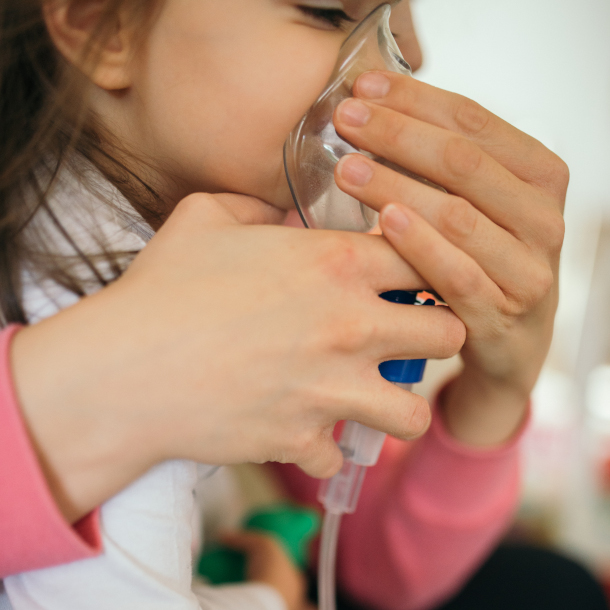
Exposure in the womb to bisphenol-A, or BPA, increases risk of asthma and wheezing in school-age girls, a new study from the Barcelona Institute for Global Health finds. (Photo: Nenad Stojkovic, Flickr, CC BY 2.0)
Higher levels of Bisphenol A (BPA) plastic exposure while in the womb are associated with increased risk of asthma and wheezing in school aged girls, a new study has found. Researchers measured exposure to BPA in pregnant women in Europe and then tracked their children for years. It’s the latest danger sign regarding the estrogen-mimicking component of some plastics that has been linked to numerous health problems. These types of chemicals are often used in plastic water bottles and food containers. Leonardo Trasande is a pediatrician who directs the NYU Center for the Investigation of Environmental Hazards and joins Host Steve Curwood to discuss.
Transcript
CURWOOD: From PRX and the Jennifer and Ted Stanley Studios at the University of Massachusetts Boston, this is Living on Earth. I’m Steve Curwood.
Girls have a higher risk of suffering from asthma if their mothers were exposed during pregnancy to a chemical called Bisphenol A, or BPA, which can be found in plastic water bottles and the linings of food cans. This new finding joins other studies linking BPA exposure to cardiovascular disease, type 2 diabetes, and disrupted brain development. BPA and similar chemicals can mimic estrogen and disrupt normal hormone functions, and apparently, as we now learn, lung development. Scientists led by the Barcelona Institute for Global Health measured exposure to bisphenol A in 3,000 pregnant women in Europe and then tracked their children for years. They found higher levels of BPA exposure while in the womb led to increased risk of asthma and wheezing in school aged girls, though not boys. Dr. Leonardo Trasande is a pediatrician who directs the NYU Center for the investigation of environmental hazards and does similar research. Dr. Trasande, welcome back to Living on Earth!
TRASANDE: It's a delight to be back, Steve, always.
CURWOOD: So this study led by a group in Barcelona, Spain, has linked Bisphenol A to asthma in school aged girls and not boys. This is a fascinating aspect of this study. What's going on here? What exactly did they find? And how did they get it?
TRASANDE: Well, they followed a large group of mothers and kids from across Europe, very carefully controlled studies that collected all sorts of data the same way in a consistent fashion that allowed them to then look at urine levels of bisphenols and relate that to lung function, as well as asthma in the kids as they follow them out now to the teenage years. I'll start by just emphasizing bisphenols are synthetic estrogens. They were actually considered as pharmaceuticals back in the 40s and 50s, when diethylstilbestrol came on the scene. Bisphenol A just wasn't strong enough as a pharmaceutical back then. So instead of the DES story, we could very well have had the BPA story, were it not for the potency of that estrogen. Now bringing it back to asthma, sex hormones shape lung development, just like inflammation can perturb growth and function of the lung buds. And during pregnancy, the lung buds are still forming, the number of them are still developing, they're branching out. And if you disrupt that development, that basic architecture, the consequences can be lifelong.
CURWOOD: So how fair is it to say that the bisphenol affects the expression of the genes that are being used to grow the lungs in a fetus? And that because sex hormones are a part of that swirl, in this case, it affects girls more than boys when it comes to long development?
TRASANDE: Well, we've got a ways to go to understand the full why we found this effect. This is an observational study, they weren't able to look as yet at the mechanisms underlying that. The way to really tease that out would be to look at genes as they are expressed at birth or in the children that have been followed over time. That's probably something that's underway. I know, in some of the participating cohorts in this study, they have that kind of data and are interested in looking into that. So we have some more work to do to figure out the exact mechanism. But that doesn't take away from the importance of the findings, and the fact that other studies have identified effects of bisphenol exposure on risk of asthma.
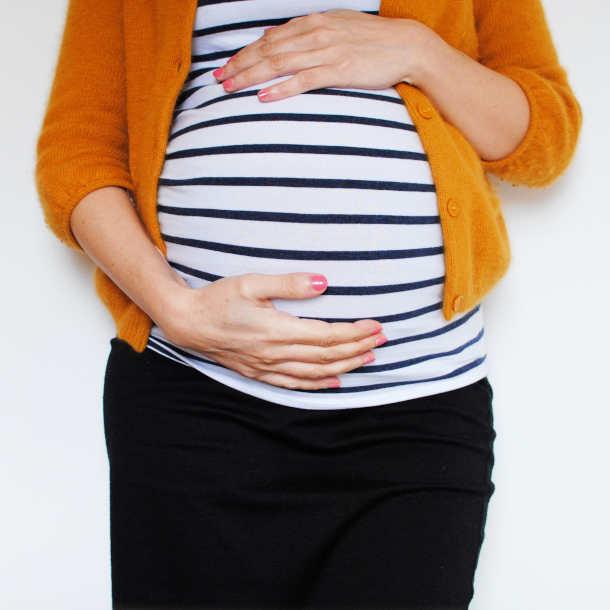
While the study focused on the effects of exposure to BPA in utero, bisphenols can be harmful to all of us at every stage of life, increasing risk of diabetes, obesity, and cardiovascular disease. (Photo: _steph_, Flickr, CC BY-NC-ND 2.0)
CURWOOD: So what's the significance of this study in comparison to the other research? And why should we pay attention to this particular study so much?
TRASANDE: Well, Steve, it's important to emphasize that this study followed populations of kids over time, whereas most of the studies before had looked at a cross section of a population, so that longitudinal design, with careful control of factors such as tobacco smoke exposure in utero, which is even more problematic for developing fetus and baby and then child, as well as other important factors that could otherwise have explained the effects. So, when you put the pieces together, this is a really important part of the jigsaw puzzle.
CURWOOD: So, the results of this study point to Bisphenol A, but there are other bisphenols, particularly after Bisphenol A came out of plastic drinking containers. Other forms of it, I think Bisphenol S is a popular one that got used. To what extent are all these bisphenols somewhat risky along these lines, that just going from Bisphenol A to say Bisphenol S for a container may not be so protective?
TRASANDE: We're constantly playing catch up in epidemiology and studying the effects of these populations, particularly in kids. And that's because we had for many years an "innocent until proven guilty" mindset when it came to chemicals in manufacturing. And when consumer attention to BPA came out in the late 2000s, companies raced to put "BPA- free" on their baby bottles and sippy cups, sounding responsive. But the fact is that we've had 40 or so artists formerly known as BPA, as I like to call it, in an omage to prints. And what little we know about some of these replacements suggests a "Whack-A-Mole" phenomenon where we've repeated the tale with BPA for BPS, Bisphenol S, just as an example. BPS is, by the way, as estrogenic, as toxic to embryos. And as if not more persistent in the environment. So unfortunately, the consequences we described in this study for BPA, may well repeat themselves as we follow later populations insofar as they're exposed to the same levels of BPS.
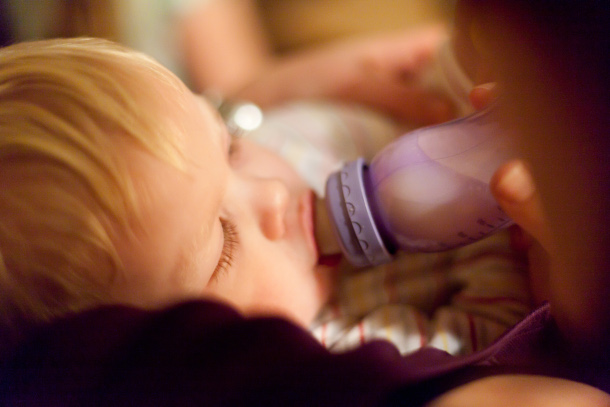
In 2012 and 2013, the Food and Drug Administration banned the use of BPA in baby bottles, sippy cups, and formula packaging. However, BPA is still present in many everyday items, such as metal cans and thermal paper receipts. (Photo: Sander van der Wel, Flickr, CC BY-SA 2.0)
CURWOOD: What I understand, BPA is found in all kinds of things, everything from a receipt that you might get at the grocery store, beverage containers, laundry detergents. Why are these chemicals so commonly used so readily available for people to be exposed to?
TRASANDE: The main word is plastic. Bisphenol is used as an ingredient in a variety of polycarbonate resins, as well as in some cases, epoxy resins. And those are used in a broad array of consumer products. Two of the major routes of exposure that you've described are canned food consumption, as well as thermal paper receipts. Many companies are saying that they've gotten bisphenols out of canned linings. The data are still missing, frankly, to really confirm that. I've asked the industry for that data. And we're hoping that, you know, in a transparent way we can get clarity that we're at least shifting away from bisphenols period, as a class.
CURWOOD: Now, this study that we're talking about links asthma and school aged girls to Bisphenol A. In the past, you've been involved with studies that show that high BPA levels in adults can be linked to what almost a 50% greater risk of death within 10 years. What was going on in that study?
TRASANDE: Well, these chemicals were not designed with the human body in mind. So you can imagine these free spirits, hacking all sorts of hormonal functions, that can have consequences for all of us. You know, kids are uniquely vulnerable, they drink more water, eat more food, breathe more air, they have developing organs, et cetera. But life is a window of susceptibility to these synthetic chemicals, and particularly for hormone function. So we did a study looking at a national data set called the National Health and Nutrition Examination Survey, and we looked at death certificates, linked those data to the measures of bisphenols taken a national survey in their urine, and found that they were more likely to die from heart disease over a 10 year period. That's also in the context of increases in obesity in adults, increases in diabetes in adults, by the way in relationship to Bisphenol A, as well as S, in that case. So you have a bit of a rap sheet, if you will, for these chemicals, when it comes to cardiovascular disease, because metabolism goes hand in hand with heart disease. So it's fair to say and summarize that these chemicals have a long and unfortunate storied history of the health effects that they can induce in all of us.
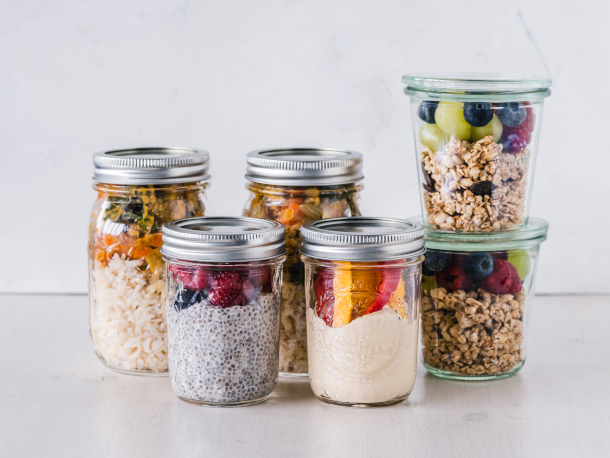
Our guest Dr. Trasande suggests that we need to rethink our relationship with plastics and return to glass and stainless-steel alternatives. (Photo: Ella Olson, Flickr, CC BY 2.0)
CURWOOD: You know I think about 10 years ago, the US Food and Drug Administration banned the use of Bisphenol A, BPA, in things like baby bottles and sippy cups and formula packaging. How do you think the government will react to this latest study showing greater risk of asthma among girls who were prenatally exposed to BPA? What kind of regulation do you think is needed? And what kind of regulation are you anticipating?
TRASANDE: I still rue the day where the Food and Drug Administration chose not to ban bisphenols in can linings, including BPA, when the evidence was clear enough to get it out of baby bottles and sippy cups. We've actually done a study a while back published in Health Affairs, where we describe the potential health and economic benefits of one safer alternative, such as oleoresin, which costs 2.2 cents a can, to use in these linings. And then what we did is to say, Okay, let's see if the cost of replacing all the cans in the US is $2.2 billion. What are the potential health and economic benefits on the other side of that balance? And we found in some scenarios, that the benefits of replacing BPA with something free of health effects, which is a big "if", was potentially greater, even six fold greater in certain scenarios. So this isn't just simply a health issue. It's an economic issue, because we all pay from the consequences. But to get to your point, Steve, I'm concerned that this finding won't move the needle and so much has already been described, though I'm always hopeful.
CURWOOD: So, in particular, what might a pregnant woman do to avoid exposure, to bisphenols, right now? I mean, what options do they have to keep their babies safe from this?
TRASANDE: Well, the good news is there are safe and simple steps all of us frankly, not just pregnant women, but especially pregnant women, can take to limit their exposure to hormone- disrupting chemicals. We've already alluded to canned food consumption. Fresh fruits and vegetables are a good alternative. You know, if frozen food is available, even those plastic containers pose lesser risk as long as they're not microwaved. If you take the fruits and vegetables out of those frozen containers, and put it, let's say, into a glass container before you heat it, or what have you. I would prefer pregnant women eat organic because there are benefits to avoiding pesticide exposure as well. In addition, we just need to really renegotiate our relationship with plastic. We've gotten lulled into the mantra of The Graduate, that plastics is the future. Plastics is really the past. And we need to switch back to glass and stainless steel. And particularly, we have to avoid microwaving, or machine dishwashing plastic. And the recycling numbers are important because you can avoid the plastics of greatest concern, if you must use plastic. The numbers to avoid are three, six, and seven. Three are for phthalates, which we haven't talked about, have their own effects on hormones. Six is for styrene, a known carcinogen, and seven are for the bisphenols, we've talked about.
CURWOOD: So what plastics are there to replace BPA in a safe way?
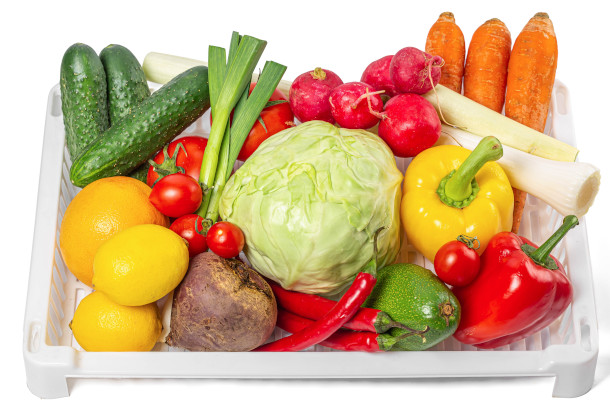
Consuming fresh fruits and vegetables as opposed to canned foods is another healthy way to avoid exposure to BPA. (Photo: Marco Verch, Flickr, CC BY 2.0)
TRASANDE: Well, that's a tall order. And the bio plastics had been touted as safe. But what little we know suggests that there are health effects on the endocrine system associated with chemicals that are found in those plastics. Some of this is difficult to accomplish, because companies can vouch that for food packaging materials that things are generally recognized as safe. So we as researchers have to go play catch up to figure out what's in the materials and what are the effects associated with the materials. There's a lot of material science that has to be considered because some things do absorb and some things don't. But the fact is, when you already have huge ecological consequences to plastic for fish, for wildlife, for frankly, water supplies, be it to the microplastics and macro plastics in our planet. We have to take a step back because we're also seeing this broader portfolio of problems directly related to our human health and the chemicals from plastic. So as much as people will tell me that there are safer plastics, the reality is we have to reduce our plastic use, period.
CURWOOD: Leonardo Trasande is a professor of pediatrics and director of the NYU Center for the Investigation of Environmental Hazards. Dr. Trasande, thanks so much for taking the time with us today.
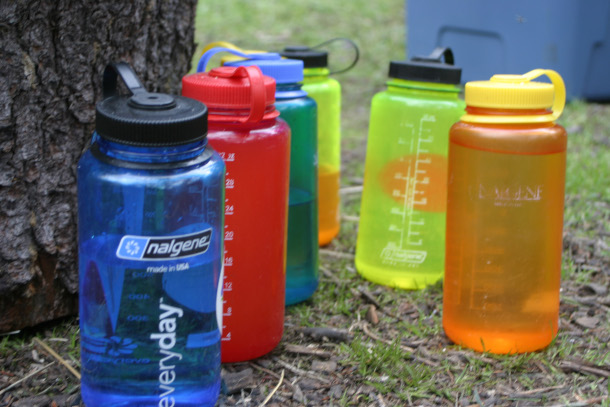
Alternatives to BPA should still undergo investigation by scientists, who often are forced to discover the health effects of chemical materials after they are already on the market. (Photo: Kyle LeBoeuf, Flickr, CC BY 2.0)
TRASANDE: It's always a joy talking with you, Steve. Thanks again.
CURWOOD: Our pleasure.
Links
CNN | “BPA linked to asthma in school-age girls, study finds”
CNN | High BPA levels linked to 49% greater risk of death within 10 years, study says
Living on Earth wants to hear from you!
Living on Earth
62 Calef Highway, Suite 212
Lee, NH 03861
Telephone: 617-287-4121
E-mail: comments@loe.org
Newsletter [Click here]
Donate to Living on Earth!
Living on Earth is an independent media program and relies entirely on contributions from listeners and institutions supporting public service. Please donate now to preserve an independent environmental voice.
NewsletterLiving on Earth offers a weekly delivery of the show's rundown to your mailbox. Sign up for our newsletter today!
 Sailors For The Sea: Be the change you want to sea.
Sailors For The Sea: Be the change you want to sea.
 The Grantham Foundation for the Protection of the Environment: Committed to protecting and improving the health of the global environment.
The Grantham Foundation for the Protection of the Environment: Committed to protecting and improving the health of the global environment.
 Contribute to Living on Earth and receive, as our gift to you, an archival print of one of Mark Seth Lender's extraordinary wildlife photographs. Follow the link to see Mark's current collection of photographs.
Contribute to Living on Earth and receive, as our gift to you, an archival print of one of Mark Seth Lender's extraordinary wildlife photographs. Follow the link to see Mark's current collection of photographs.
 Buy a signed copy of Mark Seth Lender's book Smeagull the Seagull & support Living on Earth
Buy a signed copy of Mark Seth Lender's book Smeagull the Seagull & support Living on Earth

